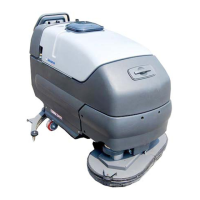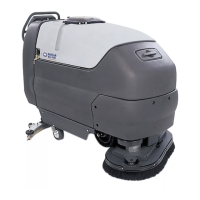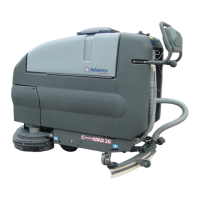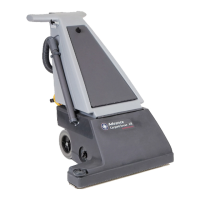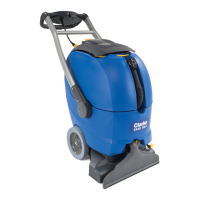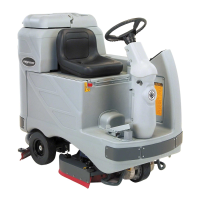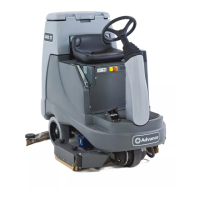Engine System - LPG LEV 187Service Manual – CS7000
Engine RPM Control
The ECU directly monitors the engine speed and adjusts the throttle angle to maintain the current target
engine speed.
The main machine controller communicates the desired engine speed mode to the ECU via the Throttle 1
and Throttle 2 wires. It either sends out 0v or 12v on each wire, depending on the desired speed mode.
Speed Mode Engine Speed Throttle 1 Throttle 2
Idle 1700 RPM 0 0
Run 2500 RPM 0 12v
Maximum Power 2700 RPM 12v 12v
There are several conditions that will override the user’s engine speed request.
• High pressure wash forces to run speed.
• If the engine is at idle speed, the engine will be forced to the run speed when sweeping only or vacuuming
only. The force idle (neutral time-out) will return the engine to idle speed.
• If the engine is at idle or run speed, the engine will be forced to maximum power speed when scrubbing
only or scrubbing and sweeping. The force idle (neutral time-out) will return the engine to idle speed.
• If the override is run speed, the user can change between maximum power speed and run speed.
• If the override condition goes away (e.g. sweep system turns off) and the user has not changed the engine
mode, the engine is returned to the mode before the forced override.
Normal Engine Shut Off
Shutting off the key switch removes the 36v “key switch input” from the main machine controller. The main
controller then removes the 12v “ignition on” output from the ECU. The ECU shuts off the engine.
Engine Protection Modes
The ECU will shut off the engine if it overheats or loses oil pressure. If this occurs, the ECU informs the
main controller the engine has been intentionally shut down in order to protect it from damage. The main
controller responds by displaying both the low oil pressure warning and the high engine temperature
warning icons to the operator (Both icons are displayed since the main machine controller only knows that
the ECU shut down the engine and does not know if it was due to loss of oil pressure or to over temperature).
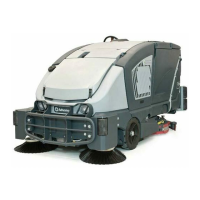
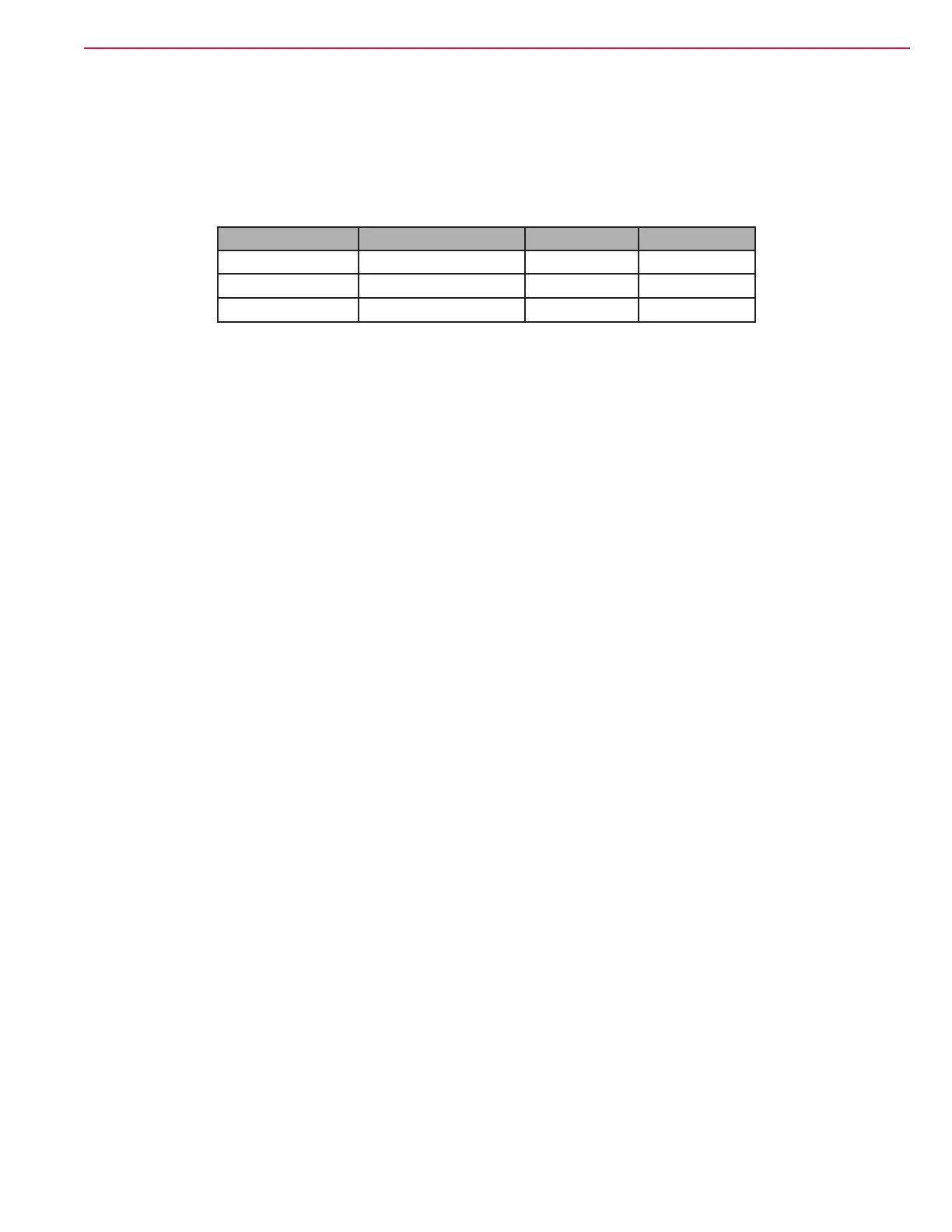